Solomon's Seal shoots (Polyganatum biflorum and Maianthemum racemosum covered here) have to be one of the most under-appreciated wild vegetables out there. If you like fiddleheads, asparagus, or just tasty green vegetables in general, you owe it to yourself to find this plant if it grows near you and give it a try.
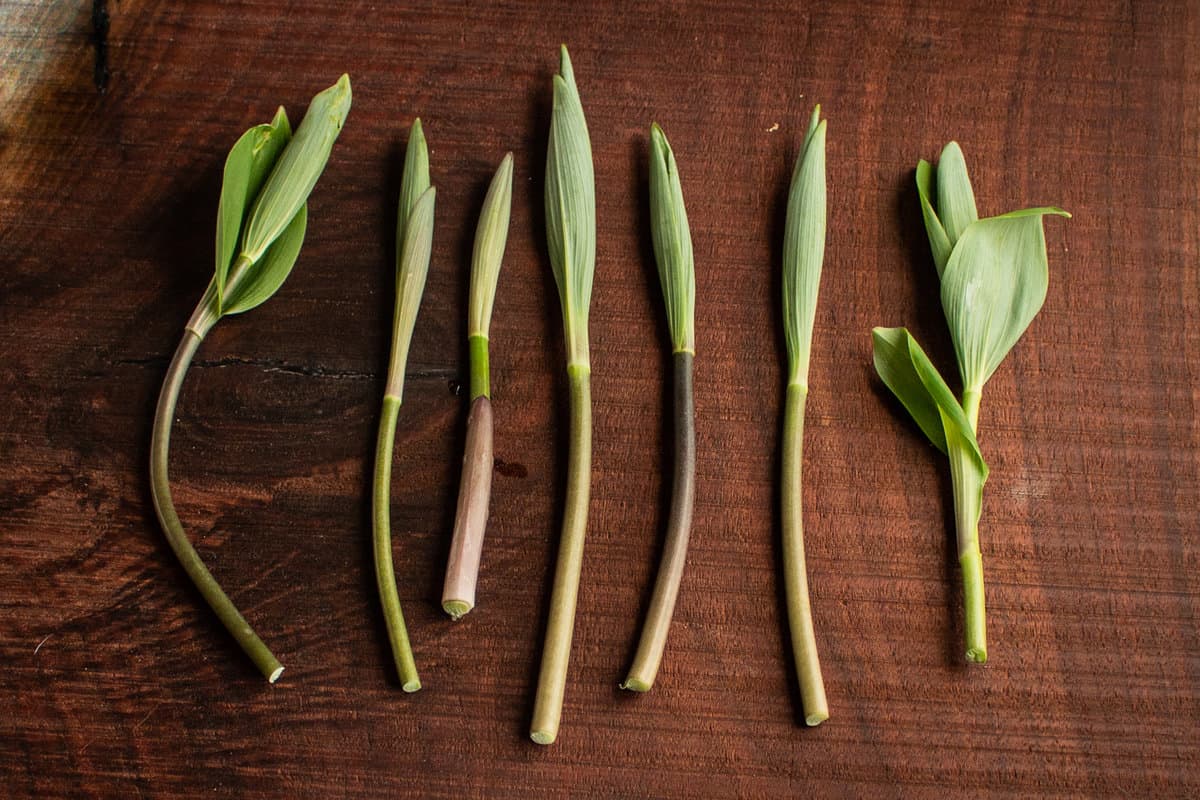
I read about it first in Sam Thayer's original book the Foragers Harvest, but didn't put effort into looking for them until I saw my friend Linda Black Elk harvesting some. I don't see this plant too often around the Twin Cities where I was living at the time, at least in colonies I would feel ok about harvesting from.
Linda shared a few pictures (right around the second week of May in Minnesota) when I was going to my fathers farm to butcher some pigs. I got to boucherie early and had a little time to poke around the old grove on the farm-a place I never gave much thought to as it's filled with crumbly box elders and wood nettle-not exactly the kind of spot a kid want's to explore or build a fort.
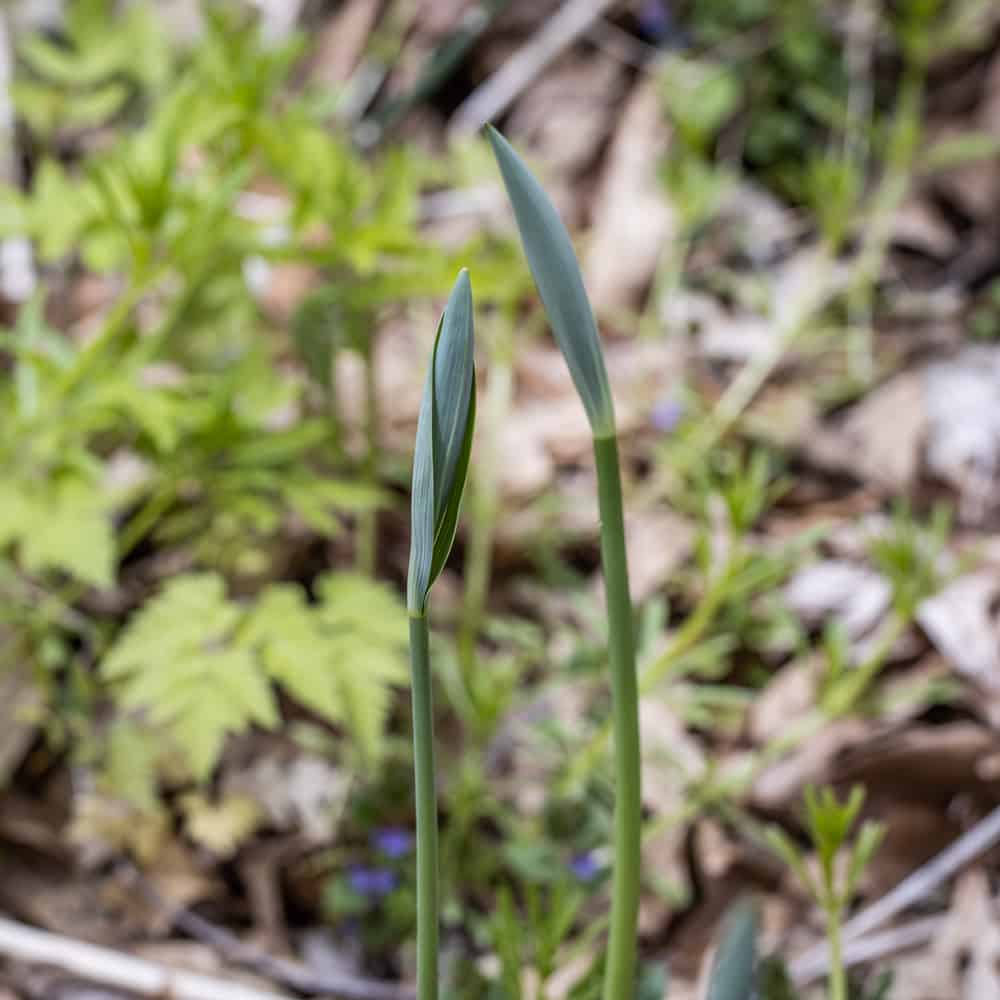
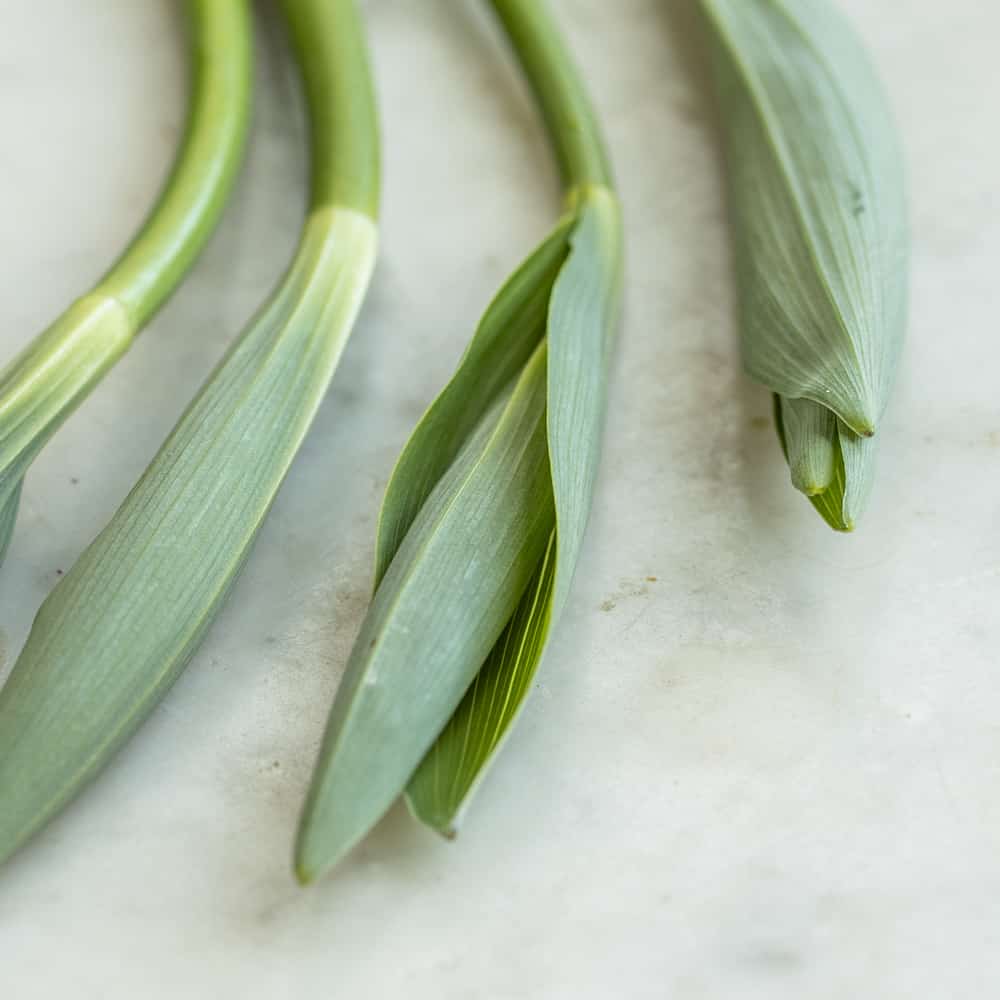
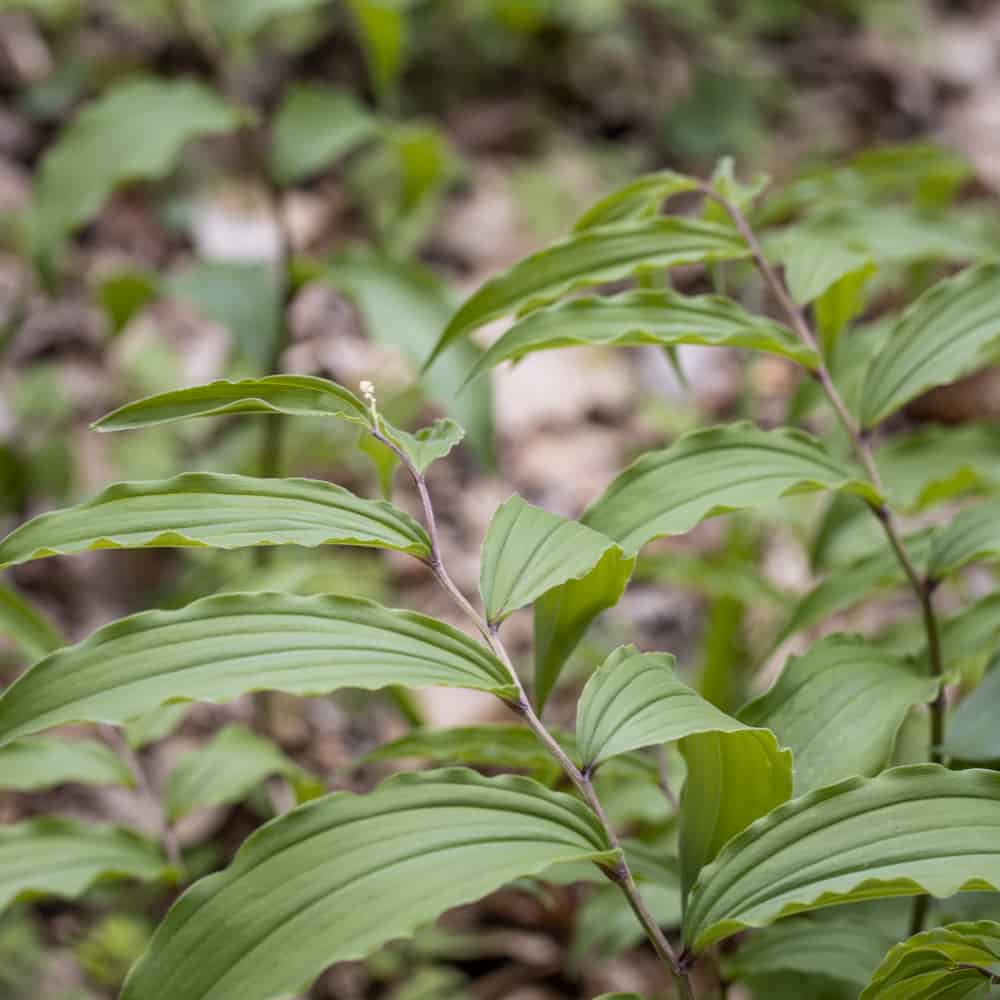
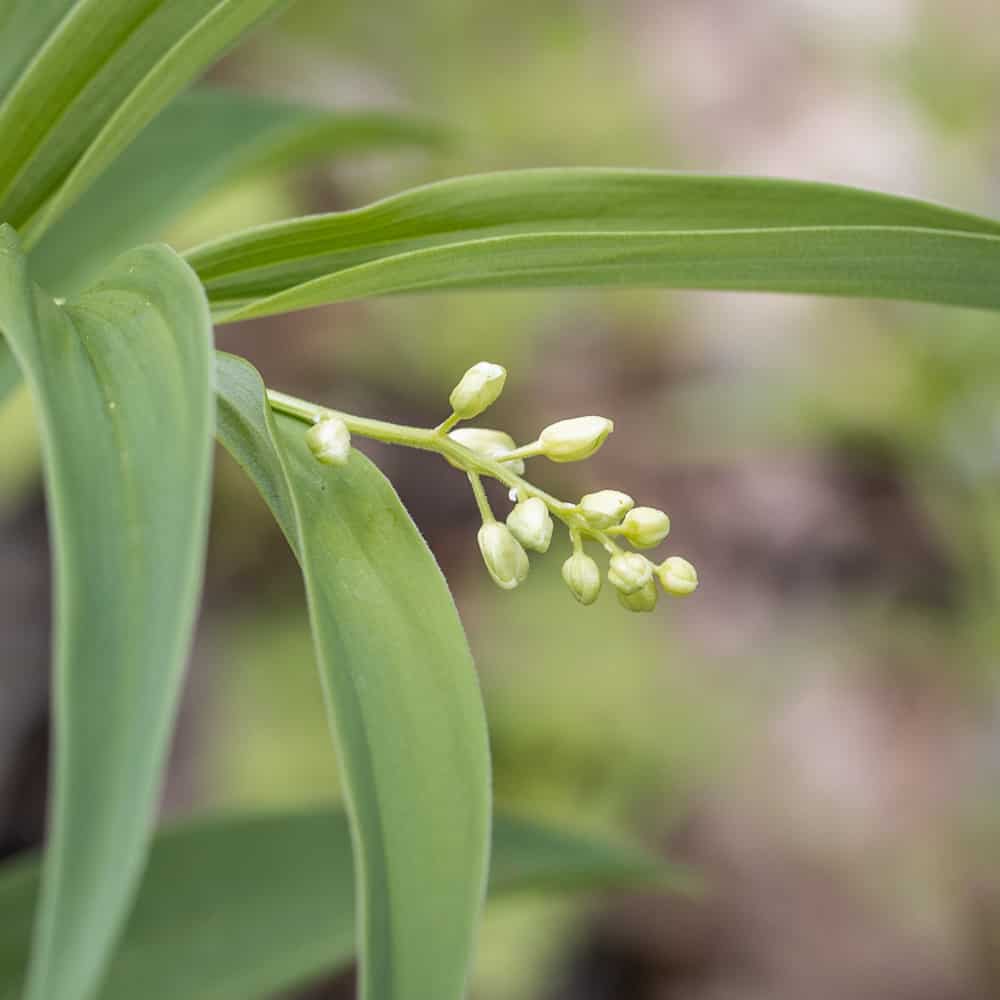
I hadn't stepped ten feet into the grove though, when I saw oodles of delicious looking Solomon's Seal Shoots all around. There was a good blend of maturity, with some plants that were getting more sun starting to flower (making positive ID a snap) but nearly all of them in the shade were at a perfect stage for harvesting.
On a related note, know that the Polygonatum multiflorum found in Europe is toxic.
Looking at the plant, the shoots just look like something you want to eat, and they are absolutely delicious. Eat a bit of the shoot fresh and you'll notice a mild, verdant flavor reminiscent of asparagus, but without the aromatic after-effects we all know and love. The asparagus comparison is common with a number of wild plant shoots, but Solomon's Seal are actually related to them, along with Hosta Shoots, which are also edible.
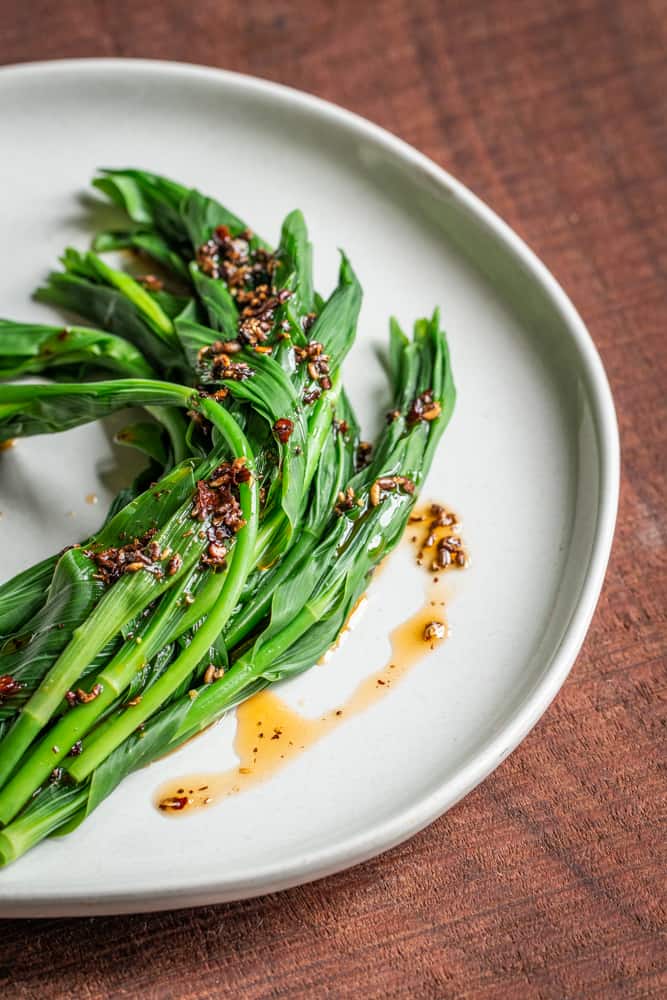
Habitat
I most often see these in places where ferns would like to grow, like the sides of trails in shady, deciduous woods. They do not like full sun.
Species
There's a few different species here, and at the shoot stage when you want to get them they can be nearly impossible to tell apart. The good news is that False Solomon's Seal, True Solomon's Seal, and the look alike Large Flower Bellwort (Ulvaria grandiflora) are all edible, and I know of no toxic look alikes.
Identification
True Solomon's Seal / Polyganatum biflorum
True Solomon's Seal will show it's flowers descending down the stem.
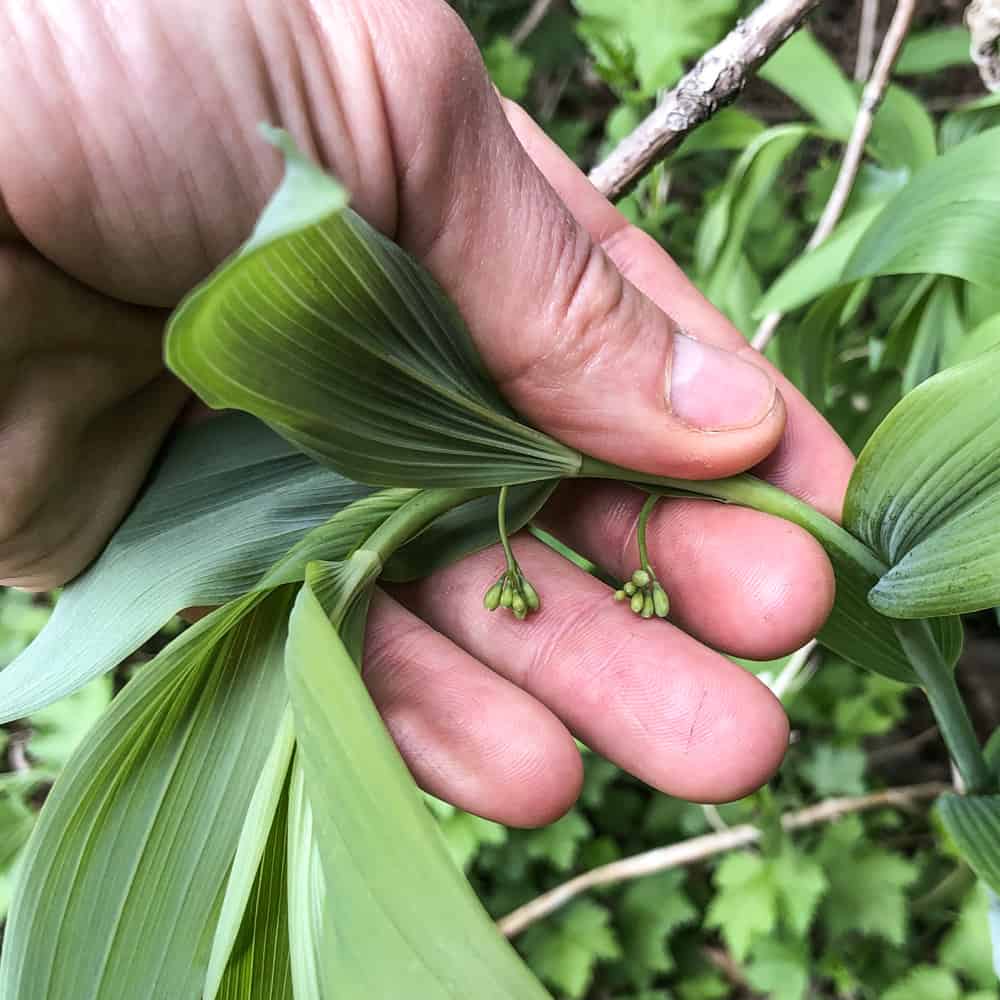
False Solomon's Seal / Maianthemum racemosum
False Solomon's Seal will show it's flowers at the very end of the stem.
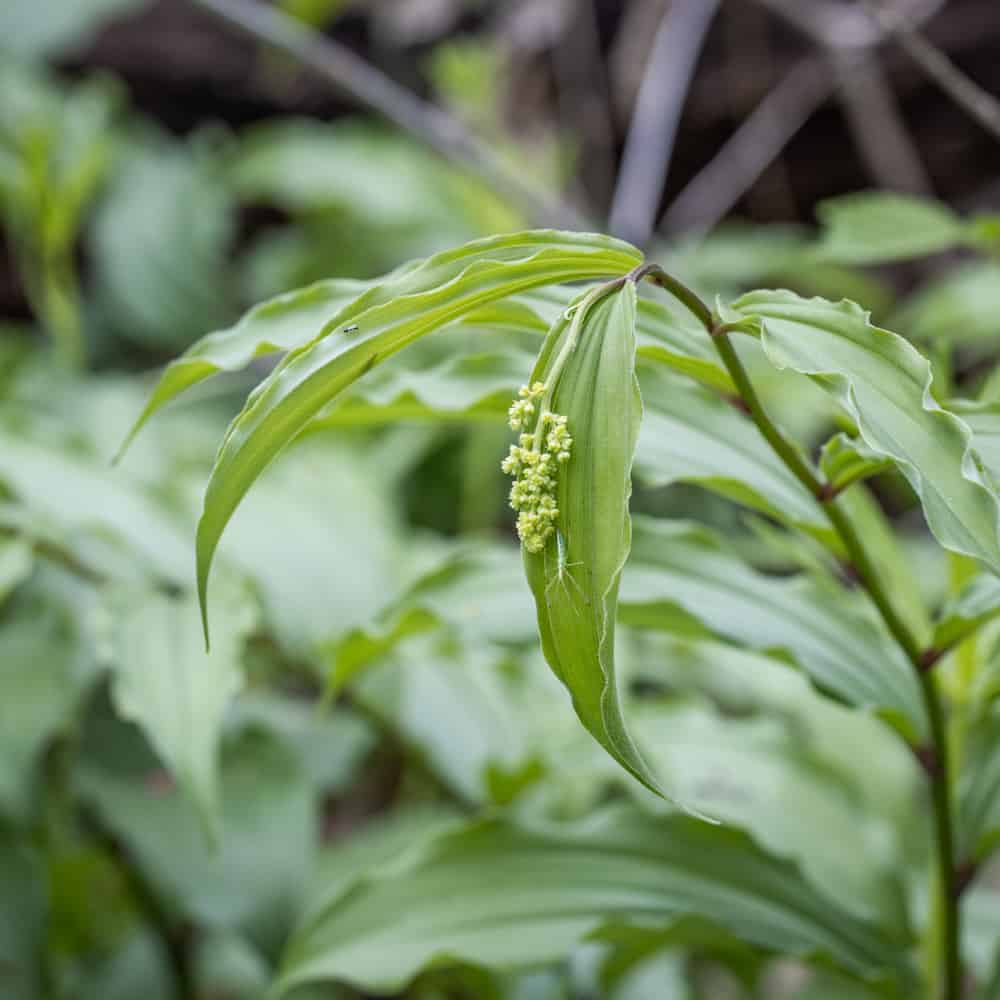
Large Flower Bellwort / Uvularia grandiflora
In my opinion, these are by far what you're most likely to confuse Smooth Solomon's Seal with at the stage when the shoots will be looking good to eat. The good news is these are also edible, but not nearly as tasty or as hefty and handsome as True/Smooth Solmon's Seal Shoots, and False Solomon's Seal Shoots.
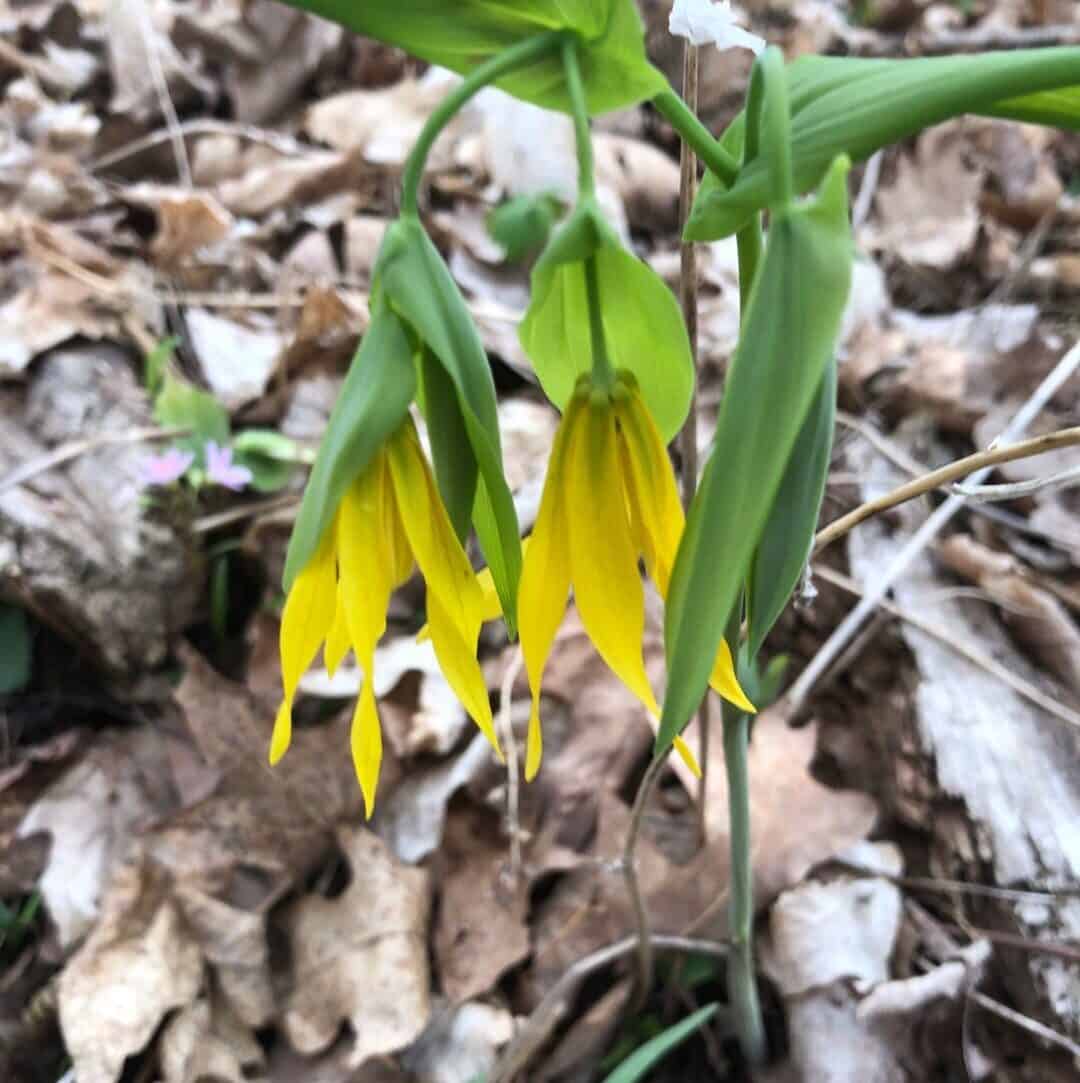
Harvesting
The first thing I think is important is that you're looking for large colonies of this plant, if I only see one or two I don't take any. It took me a while to find colonies dense enough to feel good about harvesting from, as most often when I see this plant they're growing singularly-one here, one there.
Choose Solomon's Seal Shoots where the leaves are still tightly coiled into an asparagus-esque spear. Just like asparagus, you can break the shoots off where they're tender (6 inches or a length that will fit on a plate is a good height).
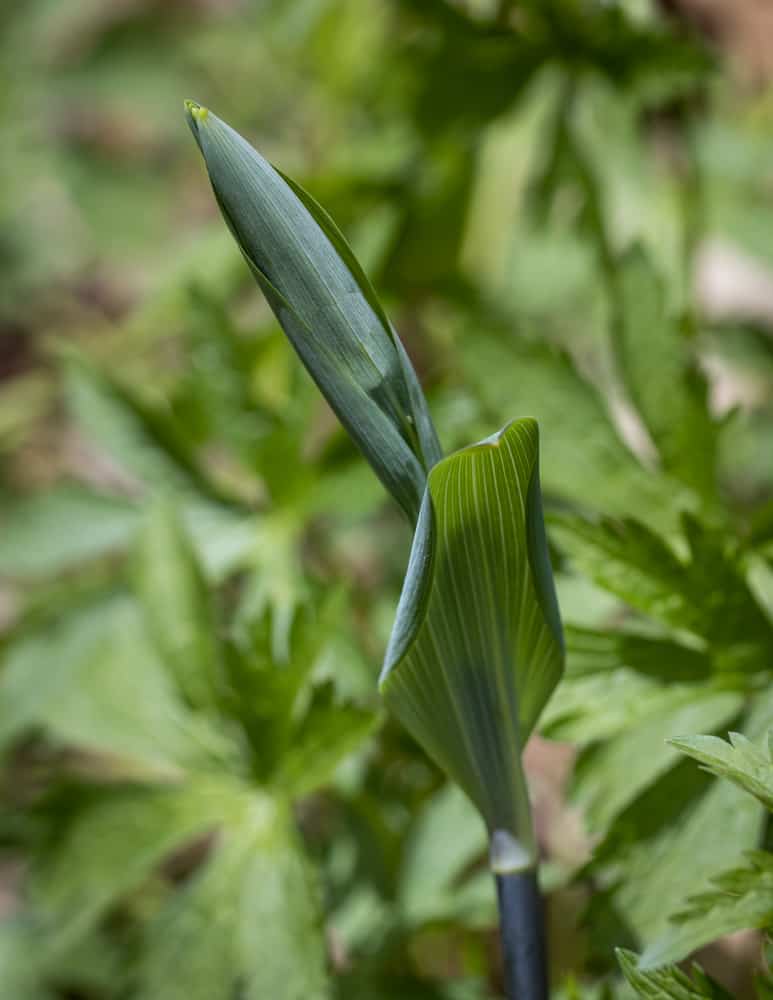
Like most other wild and cultivated edibles, you are looking only for the young, tender growth here, just as with asparagus, you can cut or break the plant where it's tender, which is easy to find by feeling the stem.
Cooking
I like to think of Solomon's Seal Shoots as a spring delicacy, so less is more here. A quick steam for a couple minutes until they're tender crisp and taste good to you, or a quick blanch (no more than a minute) is all they need.
Season them with restraint: a squeeze of lemon, a pinch of salt, and a drizzle of some good oil is all they need to be delicious. Cutting them up would be a waste unless you have large amounts of stem. Chopping up the tightly coiled leaves at the top of the "spear's point" would be a waste.
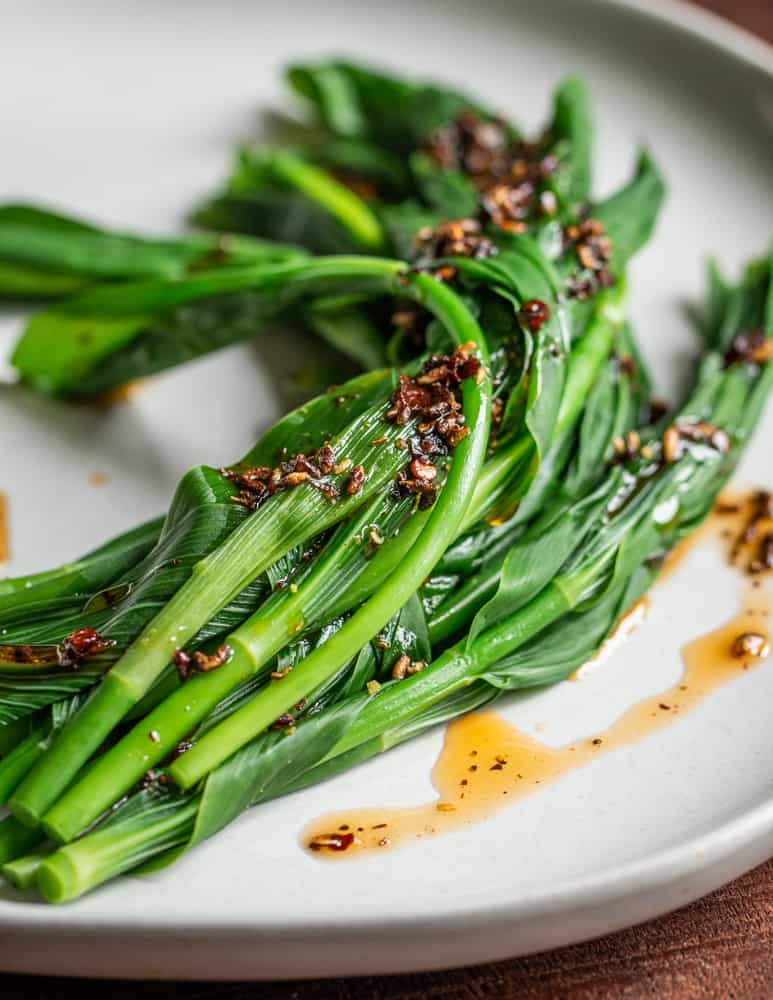
Only light cooking is needed
Many older (and modern) guides and references recommend what I find to be obscene and blasphemous cooking times for these plants. Cooking suggestions like "Boil in 1-2 changes of water" or "Boil for 10-15 minutes and eat like asparagus" are terrible recommendations for a plant that can be eaten raw, and anyone who tells you to do that with this plant is not your friend.
Would you boil asparagus for 15 minutes? Overcooking wild plants is a common culinary crime, and I can only assume it comes from an overabundance of caution. For the record, cooking any of the plants mentioned here for 10-15 minutes will give you a flaccid, mushy, off-green mess.
Basic Solomon's Seal Shoots
Ingredients
- 4 oz False or True Solomon's Seal Shoots
- Kosher salt, to taste, for the blanching water optional, they can also be steamed
- Butter, extra virgin olive oil, or another fat, to taste Or another condiment like chili oil, as pictured
- Fresh squeezed lemon juice, to taste
Instructions
- Prepare a pot with a steaming insert, or bring a pot of salted water to a boil.
- Cook the shoots for no more than 1-2 minutes, or until they're tender and taste good to you.
- Season the shoots with oil or butter, salt and lemon juice at the table and enjoy.

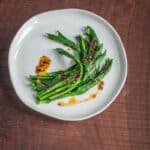
Sam Jackson
The woods near me are loaded with walnut, and also have several large patches of Solomon's seal. I'm not sure offhand whether those patches are very near walnut trees though
Joey
A friend with a wild food nursery is sharing some with me next spring! He says the tubers are edible. Have you tried them or have a recommended harvesting technique for those? Lastly, do you know if they are compatible with walnut? My exploration into juglone resistant permaculture continues! Thank you.
Alan Bergo
Hey Joey. I can't speak to if they interact with Juglone, and no I haven't tried the tubers as I don't want to dig them-I never find really large amounts. Let mw know if you find anything out of note.
JOLJ
I am reading that False Solomons seal is fine to eat as greens, tuber/rhizomes & jellies. However, the True Solomons seal is toxic & should never be communed.
What am I missing here, is it the cooking, like the GREEN tomatoes or something else??? Enjoyed your Article, Thanks.
Natalie
Hi Alan! Have you tried pickling these? We love them!
Alan Bergo
I haven't. I'd pickled them cold if I did.
Carol Kelly
The rear area of my yard is full of the variegated Solomon's seal. Am I safe to assume this cultivar is equally good? It was here before we moved in and has spread aggressively. I’d been planning to thin it out severely this spring. Adding it to a meal sounds great!!
Alan Bergo
These should be fine. Like with all new plants, eat a small amount cooked (1-2oz) to make sure it agrees with you. Let me know how you like them.
Kay
I would love to forage them next year at your yard.
Alan Bergo
What if there's none in my yard
Ue Thao
Are all polygonatum species edible? I am planning to plant some "red Leg" Solomon Seal. Is red leg edible too? Thanks so much!
Alan Bergo
I can't speak to the whole genus, but the red leg variety should be edible.
Ue Thao
Thanks so much!
Janet Keith
Wish I could say I liked them. I found them to be very bitter
Alan Bergo
I’ve had collections vary a bit with plants and bitterness. For example this year I picked fiddleheads from a different location and they pretty very bitter, and they were 100% ostrich ferns. I only taste a gentle hint of bitter in Solomon seal shoots I’ve had. All that I’ve had have been excellent, and exactly as Sam Thayer describes in his book. Don’t give up on them. Try them from a different patch, and try blanching them for a bit if they’re still bitter. If you don’t like them there’s still lots of fun plants to try.
Dawn
Ive just harvested some in our watershed here in central BC. I know that the larger are a bit bitter, but this time of year we do need bitters to clean the digestive tract
/detoxify and this can be countered with a lovely chilli oil or some roasted garlic. As a former asparagus farmer, i so missed the texture and flavour that I hadn’t found until i was introduced to the Solomon seal.
Alan Bergo
Glad you liked them Dawn. Almost time here in Wisconsin.
Julia
Delicious! We learned quickly that the older growth is bitter. The young tender shoots are perfect prepared with this recipe. Thank you!
Alan Bergo
I haven't tasted any bitterness in mine, glad it worked for you!